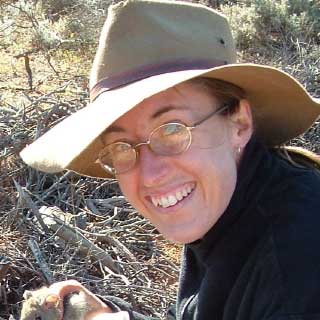This ecology unit aligns with the VCAA VCE Biology Curriculum Unit 1, accreditation period 2016-2020. It covers all the key knowledge elaborations in Unit 1, Area of Study 2: relationships between organisms within an ecosystem.
Alien Invasion
Teaching sequence for: VCE Biology Unit 1, Area of Study 2, Outcome 2
1 module
Get started
Overview
The teaching resources are comprised of seven activities that will take approximately six hours to complete. The activities are sequenced to tell a particular ecological story and should be completed in order. Each activity contains detailed step-by-step instructions for the teacher, with all relevant ecology concepts explained with model answers for student worksheets. All resources are provided, such as videos, student handouts and worksheets.
Students learn key ecology concepts through a detailed case study of one of the most important and compelling ecological stories of Australia in modern times: the introduction of rabbits and foxes. Students begin in pre-European times by building a food web representing the arid zone of central Australia. Using this food web, they model catastrophic changes brought about by the introduction of rabbits, foxes and cats. They then focus on Arid Recovery, a conservation program in Central Australia designed to tackle the invasive species problem. Through Arid Recovery and the ecologists working there, students learn about contemporary conservation efforts and the work that ecologists do. Students work through the different trophic levels of the ecosystem and, engaging with real data from Arid Recovery, investigate how factors such as disease, predation and competition impact on the size and density of a population of a particular species. They explore the impact of keystone species and the controversial idea of reintroducing the dingo. Throughout the unit students engage with the work that ecologists do including transects, controlled experiments and modelling. In the final activity, students engage with a contemporary debate in conservation: should species be conserved through a small number of tightly controlled reserves, or through landscape-level management with less control? Arid Recovery are currently investigating this issue by considering the merits of fenced reserves verses the reintroduction of dingoes to large parts of the arid zone. By engaging with this issue, students reflect on the important issues that ecologists are considering today not only in Australia but around the world.
Students build key science skills in data analysis and interpretation, as specified in the VCAA VCE Biology Curriculum. In particular, they make predictions, construct bar charts and line graphs using raw data, interpret graphs and extracts from scientific reports, and consider whether experimental evidence supports a proposition.
VCE Biology (2016-2020)
Unit 1, Area of Study 2, Outcome 2, VCE Biology Study Design
Key Knowledge
Relationships between organisms within an ecosystem
- The beneficial, harmful and benign relationships between species including amensalism, commensalism, mutualism, parasitism and predation
- Interdependencies between species as represented by food webs, including impact of changes to keystone species
- The distribution, density and size of a population of a particular species within an ecosystem and the impacts of factors including available resources, predation, competition, disease, chance environmental events, births, deaths and migration
VCE key science skills
- Process quantitative data using appropriate mathematical relationships and units
- Organise, present and interpret data using schematic diagrams and flow charts, tables, bar charts, line graphs, ratios, percentages and calculations of mean
- Access secondary data, including data sourced through the internet that would otherwise be difficult to source as raw or primary data
- Draw conclusions consistent with evidence and relevant to the question under investigation
- Critically evaluate various types of information related to biology from journal articles, mass media and opinions presented in the public domain
- Discuss the implications of research findings and proposals
Learning outcomes
Students should be able to:
- Construct food webs and food pyramids as ways to represent relationships in an ecosystem
- Describe how energy flows through an ecosystem and is represented by trophic levels
- Identify and describe a range symbiotic and predatory relationships between species
- Explain how the introduction of rabbits and foxes, and the removal of the dingo, have been responsible for the extinction or near-extinction of almost all small mammal species in Australia
- Describe how Indigenous peoples actively managed the landscape
- Describe how ecologists work towards the conservation of species and ecosystems
- Explain how viruses are used to control rabbit numbers
- Compare a wide range of biotic and abiotic factors and explain how they influence the size and distribution of the population of a particular species
- Describe how ecologists conduct a wide range of experiments to learn about the ecosystem
- Explain how apex predators can be considered keystone species and how they structure the entire ecosystem


 Dr. Peta White Lecturer in Science and Environmental Education at Deakin University (Education Academic and Project Coordinator)
Dr. Peta White Lecturer in Science and Environmental Education at Deakin University (Education Academic and Project Coordinator) Contemporary VCE Biology
Contemporary VCE Biology